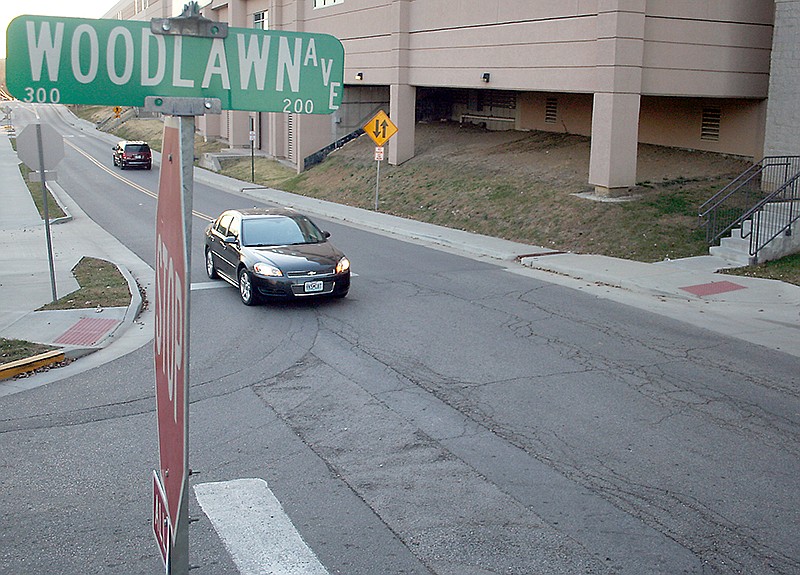The Jefferson City Public Works Committee discussed improving a portion of Monroe Street as part of a plan to revitalize the Old Munichburg area Thursday.
City staff discussed improvements to Monroe Street between U.S. 50 and Woodlawn Avenue, including widening the street to make it two-way and repairing a retaining wall.
The Historic Southside/Old Munichburg District and Neighborhood Plan calls for expanding Monroe Street to allow two-way traffic and parking, as it could be a "gateway entrance" into the neighborhood. The plan was proposed by Capital Region Medical Center and adopted by the city in July to improve the historic southside neighborhood.
The Jefferson City Council approved removing parking in the 1100 block of Monroe Street to allow two-way access on the street, but the 900 and 1000 blocks of Monroe Street remained one-way.
City Engineer David Bange said they would widen three blocks of Monroe Street between Atchison Street and Woodlawn Avenue to allow two-way travel.
To widen the street from Hickory Street to Woodlawn Avenue, Bange said, the city would need to acquire portions of about 17 properties for rights-of-way. Most of the properties on the eastern side of Monroe Street face Oak Street, so the city would need to talk to property owners about purchasing sections of backyards.
"It wouldn't be that much," Bange said. "We have a 40-foot right-of-way, and typically, we have 60 feet of right-of-way. But in this situation for that street, perhaps we could get by with just 50 feet. So we would be buying a 10-foot strip off the back of many of those properties."
However, three homes face Monroe Street, and the city would have to take a large portion of their front yards as part of the right-of-way, Bange said. City staff said it is possible the city would need to acquire these three properties.
Bange said an alternative option would be removing parking from that portion of the street, but he added, this would not work due to the number of homes without driveways.
Another issue the city faces is repairing the retaining wall between Dunklin Street and Whitton Expressway. Bange said it is in poor condition and moving slightly, so the city is monitoring the wall.
The city also would repair old stormwater infrastructure in that corridor, as well as replace the traffic signal at the intersection of Monroe and Dunklin streets to comply with the Manual on Uniform Traffic Control Devices through the Federal Highway Administration.
Reconstructing this corridor would cost about $3 million, Bange said. City staff suggested part of the funding come from the contingency development section of Capital Improvement Sales Tax G, which has about $2.5 million.
City staff said they could begin the design process, which would be about $300,000.
Council members said while they supported reconstructing the street, they worried about financing it along with any other projects. Ward 1 Councilman Rick Prather and Ward 3 Councilman Ken Hussey said they wanted to see the list of other possible projects before committing to the Monroe Street project.
Prather suggested waiting until the beginning of the new year to see how the city's finances are before moving forward on the project.
Ward 2 Councilman Rick Mihalevich said while he recognizes the financial concerns, reconstructing Monroe Street was one of the first projects listed in the southside plan and city staff need to know whether to move forward on it.
One financial option, Bange said, is to see if Cole County would partner on the project.
Due to the lack of funding, city staff said the project could be broken into phases.
The Public Works Committee said they would discuss the project more at next month's meeting.
In other action, the committee approved a permit fee for vendors to use electricity downtown, sending it to the City Council for final approval.
As part of the East Capitol Avenue improvement project, city staff included electrical outlets for vendors during festivals.
To use electricity, the event organizer can apply for a permit through the city. There will be a $70 base fee and additional $5 per 20-amp circuit. Permanently installed 100-amp service would be $25 for each location, and temporarily installed 100-amp service would cost $100 per each location.
Festival vendors would not have to apply for permits individually.
Britt Smith, operation division director for the Department of Public Works, said the proposal could be presented to council Jan. 2.

